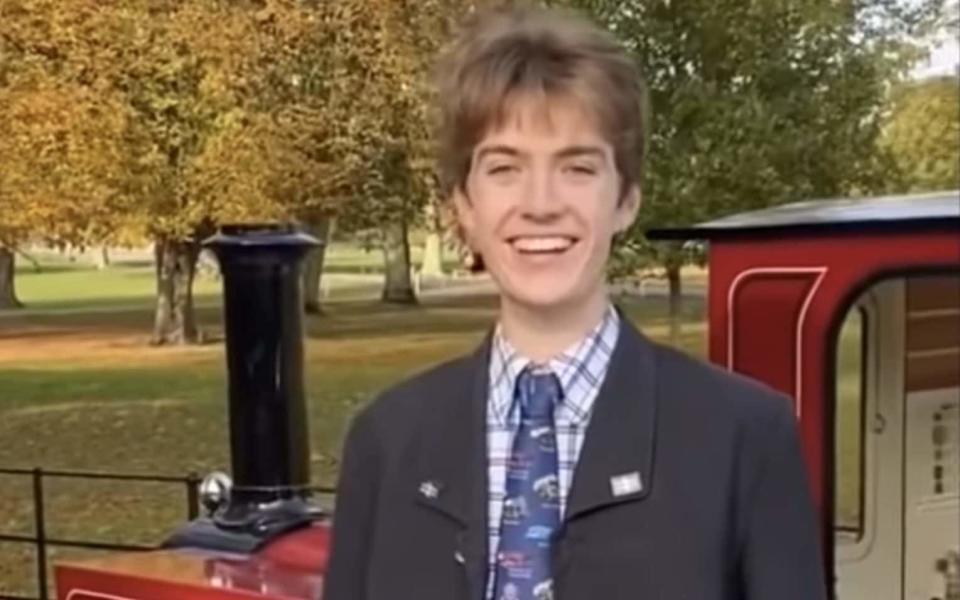The golden age of silent films is back – it’s called TikTok

Buster Keaton was so far ahead of his time, you have to wonder if cinema will ever overtake him. On a rainy afternoon in the recent half-term break, I introduced my seven and eight-year-old sons to his 1924 masterpiece Sherlock Jr: the one with the runaway motorcycle, the booby-trapped billiard ball, and, most famously, the projectionist who nods off on the job and dreams himself into the movies. And it left them both helpless with laughter. In 98 years, Keaton’s work hasn’t aged a week.
The madcap immediacy of so much early cinema has always defied its venerable age. And these days, its spirit is newly resurgent – in a highly unexpected place. Unlock your smartphone and open the video-sharing app TikTok and you’ll find a seemingly endless supply of dance routines, pratfalls and pranks – the very same material that drew audiences to moving-picture shows in the medium’s formative years.
Stunts are followed by slapstick gags, then tantalising travel clips – and perhaps a peek at What the Butler Saw, if the algorithm’s in a frisky mood. It’s everything cinema was originally made for: quickfire sensation is all, and plot is nonexistent. Just look at the trainspotter Francis Bourgeois, who became one of Britain’s biggest TikTok stars (2.2 million followers and counting) by posting short videos of railway engines pulling into stations. I mean, you don’t get much more Lumière brothers than that.
This strange short-circuiting of the history of moving images is the subject of my Archive on 4 documentary It’s the Pictures That Got Smaller, which will be broadcast on Radio 4 tomorrow night. While piecing it together, I spoke to historians, psychologists, filmmakers, TikTokkers and technology experts – and most had also noticed the recent unlikely comeback of what the film theorist Tom Gunning branded the “cinema of attractions”.
TikTok arrived in the UK in September 2017, and quickly established itself as Generation Z’s social network of choice. But during the first 2020 lockdown, its popularity mushroomed among older users who found themselves stuck at home and craving distraction. I was one of them – and I wasn’t distracted, but hooked.

The app’s hypnotic power comes down in part to the shape of the videos themselves. Unlike YouTube, Twitter, Instagram or the various streaming apps, TikTok videos are designed to be viewed with the smartphone screen in its natural vertical orientation. And that tall, narrow frame is ideally shaped to contain so much of the content that thrives on it: a human body dancing, a close-up of a face, a two-person skit.
The near-square frame we associate with early films was also a product of the technology that was built to show them. It was created in 1892 by William Kennedy Dickson, a protégé of Thomas Edison, who used 35mm film stock to create some of the first moving images. In his earliest experiments, the pictures had been circular, modelled on the glass slides used at the time in magic lantern shows.
But Dickson, a good parsimonious Scot, couldn’t bear wasting so much available space on his expensive film strips for the sake of aesthetic refinement. So cost-effective rectangles it was.
Even so, magic lantern lecturers were among this new technology’s most enthusiastic early adopters. One of them was George Albert Smith, a Brighton-based hypnotist and psychic, who started making his own short films in 1897, a year after seeing the Lumières present 10 of their own in London.

Today they look uncannily TikTokky: the self-explanatory Old Man Drinking a Glass of Beer, and the 37-second long The Miller and the Sweep, in which the two title characters bop one another with their respective sacks, creating billowing clouds of black and white dust.
As we explore in the Archive on 4 documentary, cinema’s ongoing determination to grab our attention meant the shape of that frame would change fascinatingly and drastically in the decades ahead. As television flourished, cinema images stretched wider and wider, ushering in an age of spectacle – while the more recent rise of Imax screens and digital projection has allowed directors like Christopher Nolan and Wes Anderson to switch dimensions mid-film in order to layer on awe, or signal shifts in time and mood.
Now the screens in our pockets have brought back immediacy and intimacy, and hold our gaze in ways that can be hard to break. After more than 100 years – and with apologies to Gloria Swanson in Sunset Boulevard – the moving image itself is ready for its close-up.
Archive on 4: It’s the Pictures That Got Smaller is on Radio 4 on Feb 26 at 8pm


